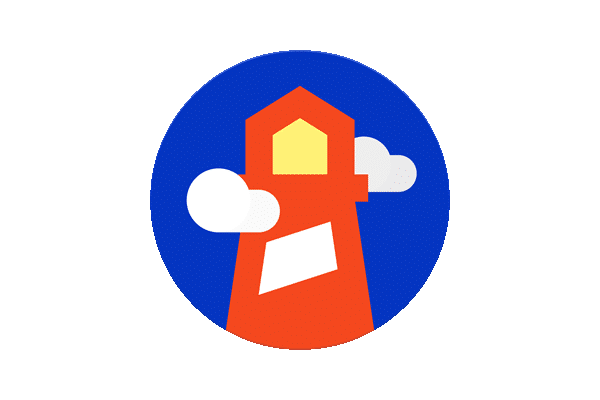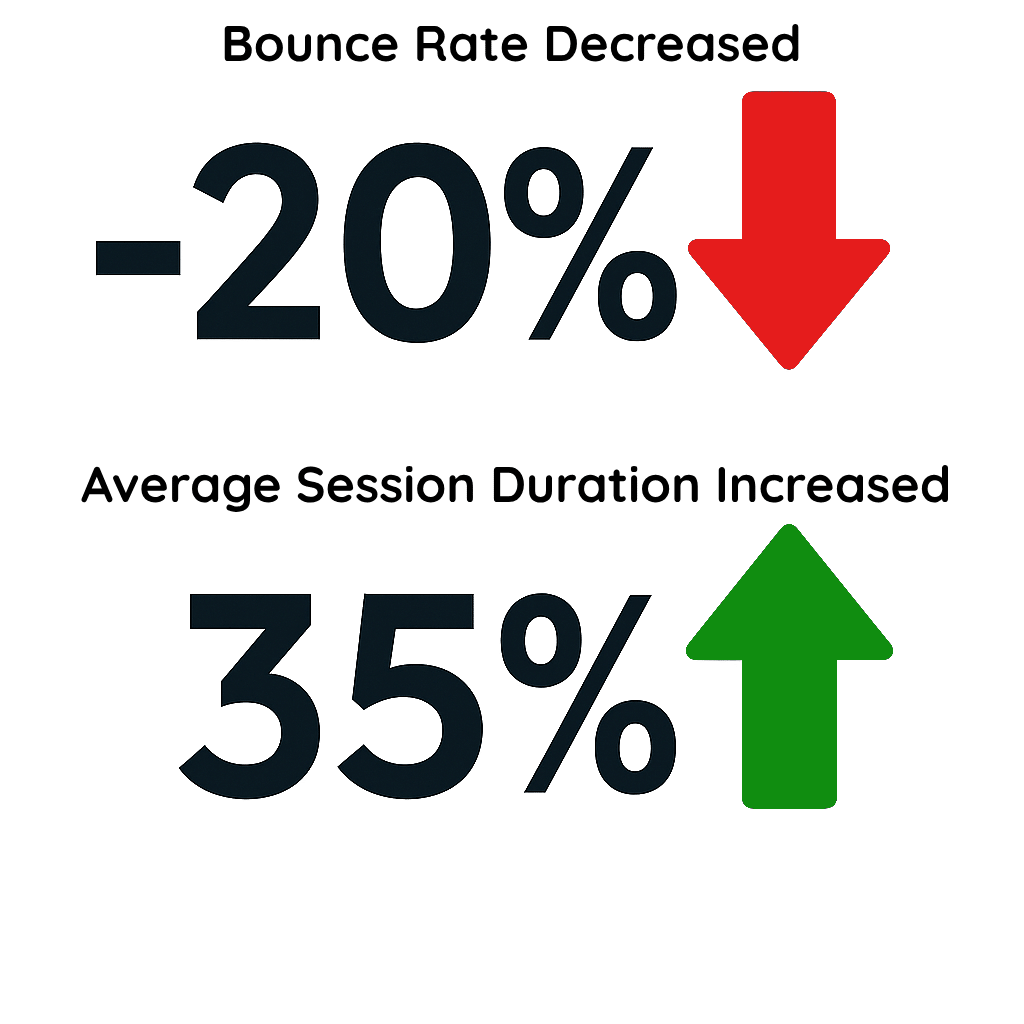TLDR
Merging SEO and web design increases your site’s visibility, traffic, and user engagement by aligning technical optimization with clear and user-friendly layouts. When we integrate SEO best practices, such as fast load times, mobile-friendly design, structured content, and strategic keyword placement, into the design process, we create websites that rank higher in search results and keep users engaged on the page.
Need a website that ranks and converts? Explore LuccaAM’s Web Design Services to optimize your site for both search engines and users.
Why SEO and Web Design Matter Together
When your website looks good but loads slowly or hides key content, you lose clicks and sales. On the other hand, a fast site with clear menus that also follows SEO best practices can lift traffic, conversions, and search visibility. Merging SEO and web design ensures that every layout choice serves both humans and search engines.
Design decisions directly affect search performance and user engagement.
Load Speed and Conversions – Scenario #1
 Site speed is a cornerstone of both user experience and search engine rankings. Google’s Core Web Vitals measure loading speed, interactivity, and visual stability.
Site speed is a cornerstone of both user experience and search engine rankings. Google’s Core Web Vitals measure loading speed, interactivity, and visual stability.
In one example, a fashion retailer shaved one full second off their homepage load time by compressing images to WebP format and enabling lazy loading. They tracked a 12 percent increase in conversion rate, as measured by Google Analytics, after raising their Lighthouse performance score from 65 to 85.
While speed isn’t everything, a general rule of thumb is to have your pages load in 2 seconds or less to avoid users from “pogo sticking” off of your site.
An actionable insight: switching large hero images to next-gen formats (WebP, AVIF, JPEG 2000, JPEG XR, HEIF, HEIC) can cut initial paint time by 30 percent. Faster pages boost both search visibility and sales.
Structured Data and Rich Snippets – Scenario #2
Adding FAQ schema is a technical SEO step that pays off in visibility. A local plumbing business implemented structured data for common service questions, such as “How often should I drain my water heater?”, using JSON-LD in their page footer. Within weeks, they secured a featured snippet spot on Google’s search results pages, resulting in a 25% increase in organic clicks.
AI tools like ChatGPT and Google’s AI Overviews are also seeking structured data to facilitate easier understanding of what’s on websites. Using Yoast SEO to generate schema output on WordPress and Screaming Frog to crawl and confirm the markup, along with Schema.org to validate structured data, is a winning combination for obtaining featured snippets on Google and helping to secure better positioning in AI search-based results.
Key points: Structured data can win rich snippets and AI overviews, which can lift click-through rates.
Navigation and User Flow – Scenario #3
 A B2B SaaS firm saw that 40 percent of visitors abandoned their site within 15 seconds. They redesigned their navigation by grouping product features into a silo structure, using clear anchor text like “API integration” and “Security features.” They also added breadcrumb trails for deeper pages.
A B2B SaaS firm saw that 40 percent of visitors abandoned their site within 15 seconds. They redesigned their navigation by grouping product features into a silo structure, using clear anchor text like “API integration” and “Security features.” They also added breadcrumb trails for deeper pages.
After launch, the bounce rate decreased by 20%, and the average session duration increased by 35%, as tracked in Google Analytics. They audited before and after using Screaming Frog to ensure there were no broken links. For example, reordering main menu items based on user priorities resulted in increased views of key product pages.
Section notes: Clear navigation keeps users engaged and strengthens search rankings.
Accessibility and Technical SEO Essentials
Accessibility and technical SEO go hand in hand. Follow these steps:
- Image optimization: Serve images in WebP or AVIF, enable lazy loading, and add descriptive alt text like “technician repairing water heater” for both users and SEO.
- ARIA labels and color contrast: Use ARIA roles on interactive elements and maintain a contrast ratio of at least 4.5:1 to meet WCAG standards.
- Canonical tags and hreflang: Prevent duplicate-content penalties with canonical links. If your site is bilingual, add hreflang tags to indicate language versions.
- Sitemaps and robots.txt: Generate automatic XML sitemaps via Yoast or a custom module and verify them in Google Search Console.
Takeaway: Technical and accessibility tweaks expand reach and protect your rankings.
Putting It All Together: Design Process Checklist
Follow this workflow for an SEO-friendly site design:
| Step | Action | Tools & Details |
|---|---|---|
| 1. | Audit existing site | Lighthouse, Screaming Frog, Google Search Console |
| 2. | Keyword mapping & internal linking | Plan silo structure; use clear anchor text to link niche pages to general page hubs |
| 3. | Wireframe with SEO in mind | Reserve space for H1s, H2s, FAQs, and flexible content areas |
| 4. | Design for speed & clarity | Compress assets, choose accessible fonts, enable lazy loading |
| 5. | Develop with technical SEO | Add canonical tags, validate structured data, implement hreflang if needed |
| 6. | Test across devices | Check Core Web Vitals in Lighthouse; review real-user metrics in Google Analytics |
| 7. | Launch & monitor | Track search rankings, page speed, and user behavior metrics over time |
Ready to audit your site? A quick review can reveal low-hanging fruit that lifts both design and SEO.
Main idea: A structured process aligns design tasks with SEO outcomes.
Measuring Success at the Intersection
To prove your efforts pay off, monitor these metrics:
- Search rankings for target keywords and overall search visibility in Search Console.
- Core Web Vitals scores (Largest Contentful Paint, First Input Delay, Cumulative Layout Shift).
- Organic traffic and conversion rate via Google Analytics.
- User behavior signals like engagement rate and pages per session.
- Rich snippet impressions and click-through rates from structured data.
Use these data points to refine your design elements and SEO strategies on a quarterly basis.
Key takeaway: Ongoing measurement ensures design tweaks continue to boost SEO results.
Final Thoughts
Bringing SEO and web design together means faster page loading times, clearer navigation, and richer search features. Each design choice— from image formats to menu structure—impacts your search rankings and bottom line.
Want to turn design changes into more traffic and sales? Let LuccAM show you where to start.
FAQs
How do internal links influence SEO and usability?
Internal links help search engines crawl your site and spread authority across pages. They guide users through related content, lower bounce rate, and boost conversions. Aim for descriptive anchor text like “responsive design tips” when linking to relevant pages.
What is schema markup, and which types are easiest to start with?
Schema markup is structured data that tells search engines what your content means. The easiest types to implement are FAQ schema, BreadcrumbList, and Organization schema. Use JSON-LD and validate in Google’s Rich Results Test.
How does responsive design affect search rankings?
Responsive design ensures your site adapts to all devices. Google uses mobile-first indexing to rank pages. A mobile-friendly layout lowers bounce rate and improves Core Web Vitals on phones and tablets.
Which tools help audit site speed and technical SEO?
Use Lighthouse in Chrome DevTools for Core Web Vitals, Screaming Frog for site crawls, and Google Search Console for indexing issues. PageSpeed Insights offers actionable suggestions for improving performance.
How often should I review design and SEO metrics?
A quarterly review balances frequency and effort. Check search rankings, Core Web Vitals, structured data reports, and user behavior metrics every three months to catch issues early and keep improving your site.
- The Intersection of SEO and Web Design - May 28, 2025
- Growing Your Rockford IL Business with Modern Website Design - April 15, 2025
- Content Pruning: The Key to Better SEO and Higher Rankings - March 25, 2025
